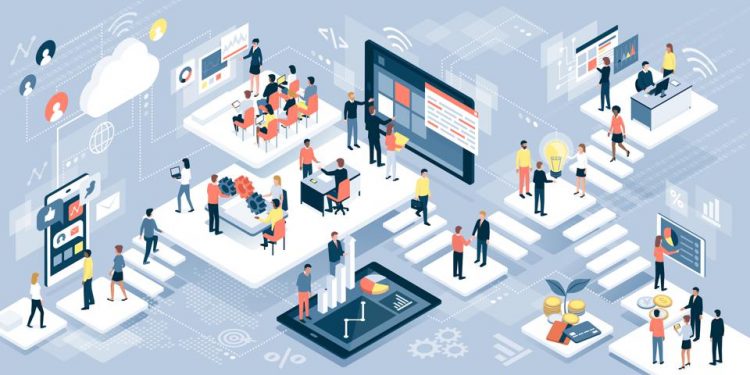What Is CI/CD?
Continuous Integration (CI) is a software development practice where developers regularly merge their code changes into a central repository. This practice aims to prevent integration problems, which are often caused by conflicting changes. The integration process is automated, meaning that the software can be built and tested rapidly, often several times a day.
On the other hand, Continuous Delivery (CD) is a software engineering approach where software functionalities are delivered frequently through automated deployments. This approach aims to ensure that the software can be released reliably whenever needed. It does this by building, testing, and releasing software faster and more frequently. Together, CI/CD forms a crucial part of the software development lifecycle, enabling developers to deliver high-quality software at a faster pace.
Importance of CI/CD in the Modern Software Development Lifecycle
CI/CD plays a pivotal role in today’s fast-paced software development environment. It has changed the way we develop, test, and deliver software, making the entire process more efficient and reliable. By automating the integration and delivery process, CI/CD reduces the risk of errors and allows for faster feedback. This enables developers to spot and fix issues early in the development lifecycle, thus improving the quality of the software.
Moreover, CI/CD fosters a culture of collaboration and shared responsibility. It encourages developers to work together, share code, and solve problems collectively. This not only improves team cohesion but also leads to better software. By reducing the ‘throw-it-over-the-wall’ mentality, CI/CD ensures that everyone is responsible for the quality of the software, leading to higher standards and better outcomes.
Finally, CI/CD increases the speed of delivery. By automating the build, test, and release processes, CI/CD allows developers to deliver software faster and more frequently. This not only accelerates time-to-market but also enables businesses to respond quickly to changes in the market or customer demands. In the digital age, speed is of the essence, and CI/CD provides the agility that businesses need to stay competitive.
Trends in CI/CD for 2024
As we look towards 2024, several trends are shaping the future of CI/CD. These trends reflect the evolving needs of businesses and developers and the growing sophistication of the technology that underpins CI/CD. Let’s delve into these trends and what they might mean for the future of software development.
Increased Integration of AI and Machine Learning
One of the most exciting trends is the increased integration of AI and Machine Learning into CI/CD. As these technologies become more advanced, they are being used to automate and enhance various aspects of the CI/CD process. For instance, AI can be used to predict and prevent integration issues, while Machine Learning algorithms can optimize the testing and deployment processes.
Moreover, AI and Machine Learning can be used to analyze code and identify potential issues or improvements. This can lead to better quality software and more efficient development practices.
Shift Towards Microservices and Serverless Architectures
Another trend that’s gaining momentum is the shift towards microservices and serverless architectures. These architectures offer many benefits for CI/CD, including greater scalability, flexibility, and resilience. With microservices, you can develop, test, and deploy each service independently, making the CI/CD process more efficient.
Serverless architectures, on the other hand, remove the need to manage servers, allowing developers to focus on writing code. This can speed up the CI/CD process and reduce the risk of errors.
Growth in Self-Service CI/CD Platforms
The growth in self-service CI/CD platforms is another trend to watch. These platforms offer a range of tools and features that simplify the CI/CD process, making it accessible to more developers. They provide a user-friendly interface for setting up and managing CI/CD pipelines, and automating the build, test, and release processes.
Moreover, self-service CI/CD platforms often come with built-in support for various programming languages, frameworks, and cloud services. This makes them extremely versatile and capable of supporting a wide range of software development projects.
Cross-Platform Development Support
Last but not least, the trend towards cross-platform development support is worth noting. As businesses strive to reach a wider audience, there’s a growing need to develop software that works across different platforms and devices. CI/CD plays a crucial role in this, enabling developers to build, test, and deliver software for multiple platforms more efficiently.
Moreover, CI/CD can help ensure that the software provides a consistent user experience across different platforms. This is increasingly important in a world where users expect seamless experiences, regardless of the device or platform they are using.
Predictions for CI/CD in 2024
Adoption of Low-Code/No-Code in CI/CD
Low code tools allow developers to build applications with minimal manual coding, using drag-and-drop components and model-driven logic through a graphic interface.
The low-code/no-code movement is not just a passing trend, but a significant shift in how we approach software development. These tools democratize application development, enabling non-technical team members to contribute to the development process, and speed up the delivery of applications.
Moreover, with the increasing complexity of software and the demand for rapid delivery, low-code/no-code tools can help teams to streamline their processes and reduce the risk of errors.
Increased Use of Edge Computing in Deployment
Edge computing refers to the practice of processing data closer to its source, rather than relying on a centralized cloud-based system. This can drastically reduce latency, improve performance, and handle large volumes of data more efficiently.
As more organizations embrace IoT, 5G, and other advanced technologies, the demand for edge computing will likely increase. In the context of CI/CD, edge computing could change the way applications are deployed and managed.
Currently, many CI/CD pipelines deploy applications to a central cloud-based environment. But with edge computing, applications could be deployed directly to the edge devices themselves. This not only reduces latency but also allows for more real-time, responsive applications.
Rise of AI-Assisted Testing in CI/CD
As artificial intelligence and machine learning continue to evolve, these technologies are starting to make their way into the realm of software testing.
AI-assisted testing can help to automate and enhance various aspects of testing, from test generation to defect detection and even predictive analytics. This could significantly improve the accuracy and efficiency of testing, helping teams to catch and fix issues earlier in the development process.
Sustainability and Efficiency Focus
As we become more aware of the environmental impact of our digital activities, there will be increased pressure on organizations to reduce their digital carbon footprint.
In the context of CI/CD, this could mean optimizing pipelines to reduce unnecessary computations, improving code efficiency, or even switching to more sustainable hosting providers.
Moreover, with the increasing demand for rapid delivery and high-quality software, efficiency will also be a key concern. This could involve streamlining processes, automating repetitive tasks, or adopting new technologies to speed up delivery.
In conclusion, as we look ahead to 2024, there are likely to be major shifts in how we approach CI/CD. From the adoption of low-code/no-code tools and edge computing to the rise of AI-assisted testing and a focus on sustainability and efficiency, it is exciting to see how these trends will shape the future of CI/CD. As always, the key to staying ahead in this fast-paced field is to keep learning, stay adaptable, and embrace change.
Author Bio: Gilad David Maayan
Gilad David Maayan is a technology writer who has worked with over 150 technology companies including SAP, Imperva, Samsung NEXT, NetApp, and Check Point, producing technical and thought leadership content that elucidates technical solutions for developers and IT leadership. Today he heads Agile SEO, the leading marketing agency in the technology industry.
LinkedIn: https://www.linkedin.com/in/giladdavidmaayan/





